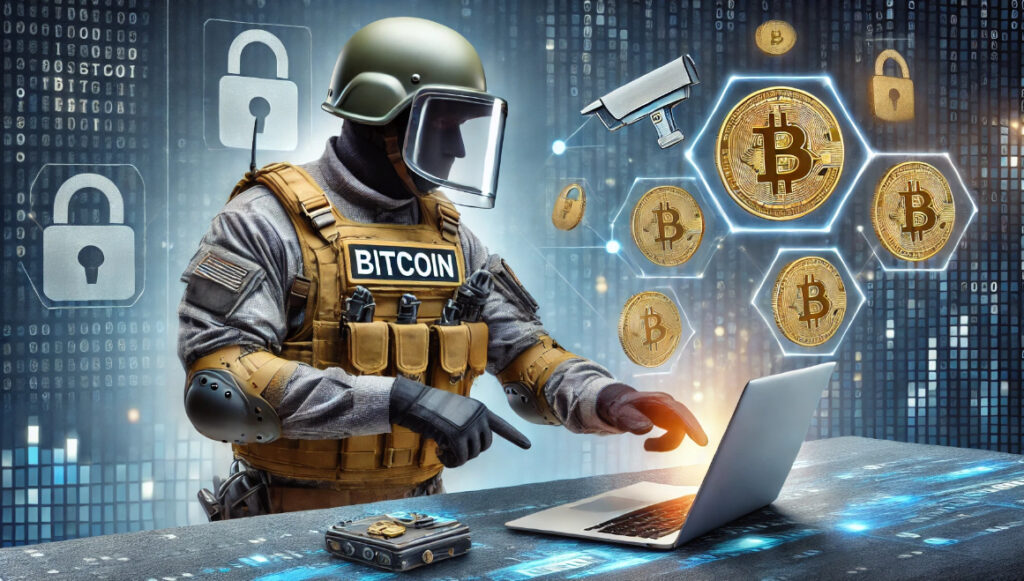In 2010, Laslo Hanyecz made the headlines when he bought two pizzas using 10,000 Bitcoins, worth about 25$. Today, the same coins would be worth millions of dollars. Stories like Laszlo’s display the possible imagination of cryptocurrency, along with risks/factors, which take us into what shall be discussed in this article.
In this post, we will try to understand how to buy bitcoin safely and sell Bitcoin safely. So, Bitcoin has gained such popularity that it probably makes many people want to buy it and invest their money in it.
However, this attraction of high profit is associated with big risks. Ensuring the security of crypto trading fees and transactions in this volatile world of cryptocurrency has never been more important. This article will consider all essential steps and practices concerning how to buy Bitcoin safely and sell Bitcoin safely, thus helping you to navigate confidently upon the market and protect your investments against potential threats.
Best Exchanges to Buy and Sell Bitcoin
| Exchange | Security Measures | CTA |
| Coinbase | 2FA, encryption of user data | Start with Coinbase |
| Binance | 2FA, SSL encryption, cold storage, SAFU | Trade on Binance |
| Kraken | 2FA, cold storage, regular audits | Explore Kraken |
| Gemini | 2FA, cold storage, hardware security keys | Join Gemini |
| Bitstamp | 2FA, cold storage, encryption | Sign up for Bitstamp |
Understanding Bitcoin and Crypto Trading
What is Bitcoin?
The decentralized, peer-to-peer digital currency known as Bitcoin was developed by a person or group using the pseudonym Satoshi Nakamoto in 2009. Unlike traditional fiat currencies, Bitcoin has no central governing body, enabling transactions safely and securely due to blockchain.
Basic of CryptoCurrency Trading
Simply, it is the way buyers and sellers of digital currencies, such as Bitcoin, engage in buying and selling through online platforms, navigating through various crypto trading fees. Traders gain from the fluctuations in their prices. It comprises exchanges for turning fiat money into cryptocurrency and vice versa, while also incorporating strategies to minimize crypto trading fees and maximize returns.
Risks Involved in Crypto Currencies
Crypto trading comes with many risks.
Market Volatility: Prices can violently swing quickly, leading to potential losses or profits.
Cybersecurity threats: Because of this, exchanges and wallets have the potential to be targeted by hackers, which may result in a loss of funds within the wallet.
Changes to the regulatory landscape: Since the legal scenery of cryptocurrency remains in its developing stage, how it is regulated may affect the markets and, subsequently, prices and trading activities.
Any person entering the field must, therefore, be educated on the very significant risks crypto trading comes with and how to mitigate them using proper measures so that traders better protect their funds and investments and can trade with a great deal of confidence.
For more insights on how to navigate the crypto world, explore our detailed guides on:
- How to Buy Bitcoin on Different Exchanges
- Comparing Fees: Finding the Low Fee Crypto Exchange
- Advanced Crypto Trading Tools
- How to Trade Bitcoin: Tips and Strategies
Choosing a Secure Crypto Exchange
Importance of selecting a Reputable Exchange
A reputable exchange will provide a reliable environment, transparent crypto trading fees, and security measures while adhering to compliance from regulatory oversight bodies. With the increased popularity of crypto trading, so is the availability of exchanges in the market—though not all offer the same level of service and security. It is, therefore, crucial to choose the exchange that will help reduce this risk and keep you safe from hacks and regulatory issues.
Characteristics of Safe Crypto Exchanges
Below are the key indicators in choosing a secure crypto exchange:
Regulatory compliance: An exchange of good repute complies with KYC and AML. This makes the exchanges bind to the legalities.
Security Features: The hallmarks of the safe exchange are security features. Look for exchanges with 2FA, encryption, and cold storage options for funds.
Insurance: Some exchanges insure funds stored on their platforms, thereby providing an extra layer of protection over the funds.
Transparency: This becomes another significant indicator of a reputable exchange. An open exchange in its operation and management would most likely be trustworthy.
User Reviews: Also, always check the review and reputation of the exchange on various platforms to gauge how reliable and trustworthy an exchange is. In case it is highly regarded, then there shall be good reviews and feedback.
Customer Support: This is a vital addition and will help with any problems relating to your transaction, including issues with crypto trading fees. A good exchange offers timely support.
Popular Exchanges are known for their Security.
Some of the best crypto exchanges are famous for their safety and reliability.
CoinBase: The easiest of all exchanges to use, hence very good for beginners. It is a compliant exchange, provides insurance over digital assets, and has security features such as 2FA and encryption of user data.
Binance: Having further development in its set of cryptocurrencies and advanced trading features—is currently the most significant exchange globally. Robust security with 2FA, SSL encryption, and cold storage are implemented. Moreover, Binance has a SAFU in case of hacking to protect users’ assets.
Kraken: Another well-known cryptocurrency exchange. Security measures include 2FA, cold storage with three-part encryption, an incident response plan, and regular audits and vulnerability assessments.
Gemini: This exchange, founded by the Winklevoss twins and based in the United States, is regulated. In this exchange, you get second-factor authentication, cold storage, and hardware security keys. All digital assets are insured with Gemini, and their security is audited as well.
Bitstamp: Established in 2011, Bitstamp is among the very oldest cryptocurrency exchanges and has struggled through all these years to build a reputation for reliability and safety. It protects its users’ funds by implementing security measures like 2FA, cold storage, and encryption. Following regulatory requirements, Bitstamp is also characterized by transparent operation.
The correct choice of the exchange is always a primary step toward ensuring you can buy Bitcoin safely and engage in secure crypto trading. You can invest and trade fearlessly once you choose an exchange that enforces all aspects of safety, regulatory compliance, and transparency.
Setting Up a Bitcoin Wallet
Hot vs Cold Wallets
Bitcoin wallets come in two primary types
Hot Wallets: These are connected to the internet, which makes it easier for frequent transactions. These can be on mobile, desktop, and web wallets, However, their online nature makes them more susceptible to hacking and cyber security attacks.
Cold Wallets: These wallets are offline, which is like storing your private keys on a physical device or a paper. Examples of these wallets include hardware like Ledger Trezor and paper wallets. These provide relatively higher levels of security.
Security benefits of Cold Wallets
Cold wallets offer enhanced security due to their offline status. They are immune to cyber threats and hacking. This feature makes them ideal for long-term storage. Cold Wallets ensure that your funds are safe from the majority of digital threats.
Setting Up a Wallet:
Choose a Reputable Provider:
Research and choose a wallet provider known for its security features. For hot wallets, options include Exodus and Electrum. For Cold Wallets consider wallets like Ledger Nano S or Trezor.
Download and Install the Wallet:
For hot wallets, download the software from the official website and install it on your device.
For Cold Wallets, follow the manufacturer’s instructions to set up the device.
Create a New Wallet:
Follow the setup process ti create the new wallet. This typically involves generating a new private key and a corresponding public key.
Backup Your Wallet:
Wallet recovery phrases or seed phrases should be stored securely in a safe location. This phrase is crucial for your wallet in case your device is lost or damaged.
Best practices for securing your wallet.
Enable Two Factor Authentication:
This adds an extra layer of security to your wallet.
Use Strong Passwords:
Create complex and unique passwords for your wallet and corresponding accounts.
Regularly update your software: Ensure that your wallet is regularly up to date to benefit from the latest security patches.
Secure your Backup:
Store your recovery phrase in a secure, offline location. It is best to avoid digital storage methods that can be hacked.
Be Cautious about Phishing: Always verify the URLs and sources of wallet software to avoid getting scammed.
By Following these above-mentioned steps and practices, you can successfully enhance the security of your Bitcoin holdings.
Buying Bitcoin Safely
This involves some steps to buy bitcoin safely.
Signing Up to an Exchange:
First, select a reputable exchange like Coinbase, Binance, or Kraken to buy Bitcoin safely and engage in secure crypto trading. Create an account with a robust, unique password.
Verification of Identity:
Complete the KYC process by submitting the necessary identification documents. All this is very important for compliance and security purposes.
Deposit Funds:
Fund your account with safe and reliable methods, such as a bank transfer or by credit card. Be sure that you are using a secure network and device to avoid any cyber threats.
Place a Buy Order:
Input the amount of Bitcoin you want to purchase. Double-check all details before confirming a transaction.
Transfer Bitcoin to a Personal Wallet:
After buying, transfer for enhanced security in your wallet. You could choose from hot wallets meant for frequent, easy access or cold wallets intended for long-term storage.
Security Tips:
Enable Two-Factor Authentication, which will add a layer of security to your account.
Phishing Scams: Always check the URLs and don’t open suspicious links.
Use strong passwords: Your passwords should be long and unique to protect them from being guessed or cracked.
Follow these steps with a view to security so that you can buy Bitcoin safely.
How to Sell Bitcoin Safely
Selling Bitcoin will involve transferring your Bitcoin to an exchange, placing a sell order, and then withdrawing the money. Here is a step-by-step guide on how to ensure it is secure.
Send Bitcoin to the Exchange:
Pick a Good Exchange:
Go for an exchange that has the basic security features in place, such as Coinbase, Binance, or Kraken.
Log in to Your Exchange Account:
Be sure you use a safe computer and network connection.
Transfer Bitcoin:
Log into your account on the exchange and click “Deposit.” Copy the Bitcoin deposit address.
Start transfer:
Open your Bitcoin wallet; paste the copied deposit address and define the amount to be transferred. Confirm the address to avoid any incorrect transfers.
Confirm the Transfer:
Finish the transaction. The transfer might need some time to be reflected in your exchange account due to network congestion.
How to Place a Sell Order:
Go to Trading Section:
Redirect to the trading interface on this exchange.
Choose Sell Order Type:
It should indicate the type of sell order one is placing, whether a market or limit sell. A market order sells immediately at the current market price, while a limit order sells at a specified price.
Sell Amount:
Enter the amount of Bitcoin you want to sell, and confirm the details of the order.
Place Sell Order:
Place the sell order. In the case of limit orders, the sale will be executed when the market price reaches your price set.
Withdrawal of Money:
Head to the Withdrawal Section:
After selling your Bitcoins, log on to the “Withdraw” section in your account on the exchange.
Select Withdrawal Method:
Choose between a bank transfer and PayPal or whichever withdrawal method suits you best.
Withdrawal Details:
Provide relevant details, such as your bank account details. Review and confirm your withdrawal request. It may take a few days before this is directly reflected in your bank account.
Importance of Transaction Verification and Security Measures
Transaction Verification:
Details check: Verify the recipient’s address and amount to be transferred carefully before confirming any transaction.
Monitor transactions: Monitor your transactions and ensure they are processed correctly and on time.
Security Measures
Enable Two-Factor Authentication (2FA): Protect your exchange account even more by turning 2FA on.
Use Strong Passwords: It involves strong and unique passwords.
Avoid Phishing Scams: Beware of their phishing attempts. Check domains’ authenticity by hovering over URLs. Never click on suspicious links.
Secure Your Devices: Keep software up to date and use antivirus software to detect and prevent malware infections.
Just follow these steps and sell Bitcoin safely by having robust security measures in place.
Safe Trading Practices
Best Practices for Secure Crypto Trading:
The following are the best practices to ensure secure crypto trading:
Create complex and unique passwords for your accounts. Avoid using the same password across different platforms.
Enable two-factor authentication (2FA): This adds another layer of security to the login process with a second verification form.
Remain Alert of Phishing: Scan the URLs, never click on suspicious links, and be wary of junk emails.
Keep updating your trading platforms, wallets, and devices to protect them from the newest security vulnerabilities.
Such measures, if implemented, can significantly improve the safety of your cryptocurrency trading and ensure you can buy Bitcoin safely while engaging in secure crypto trading.
Safe Trading Locations
Safe Places for In-Person Transactions:
Conduct person-to-person Bitcoin transactions in places that are well-lit and public, like coffee shops or bank lobbies. Such locations would provide a good amount of visibility and safety.
Safety Hints for Physical Exchanges:
Bring a friend:
Having someone with you will discourage many potential threats. Avoid carrying vast amounts of cash on your person at any time. Instead, try using safe and electronic modes of payment.
Stay Alert:
Be wary of your environment and do not reveal personally identifiable information. Ensuring safety within trading locations helps safeguard aspects of assets and personal security.
In summary, how to buy and sell Bitcoin safely means choosing reputable exchanges that will secure the wallets of users and keep best practices on online and in-person transactions. Of course, security measures must be taken first and foremost to protect your investments. Start building these good habits today to confidently stride through the cryptocurrency marketplace and protect your digital assets.
FAQs
Why should I use a cold wallet?
Cold wallets are OFFLINE applications that provide greater security for the long-term holding of bitcoins by keeping private keys out of reach from online threats.
How do I secure my crypto exchange account?
Always use strong passwords, enable two-factor authentication, and never give in to phishing sites.
How is bitcoin bought?
Sign up for an exchange, verify, deposit money, place a buy order, and then send the Bitcoin to a personal wallet.
How do I sell bitcoins safely?
Send Bitcoin to the exchange, sell, and then withdraw them. Make sure all transactions are verified, and most importantly, turn on 2FA security.
Where is it safe to make in-person transactions of bitcoin?
Publicly well-lit places such as bookstores or lobbies of banks should be used, and sellers should not carry large amounts of cash; it’s best to bring along a friend.






